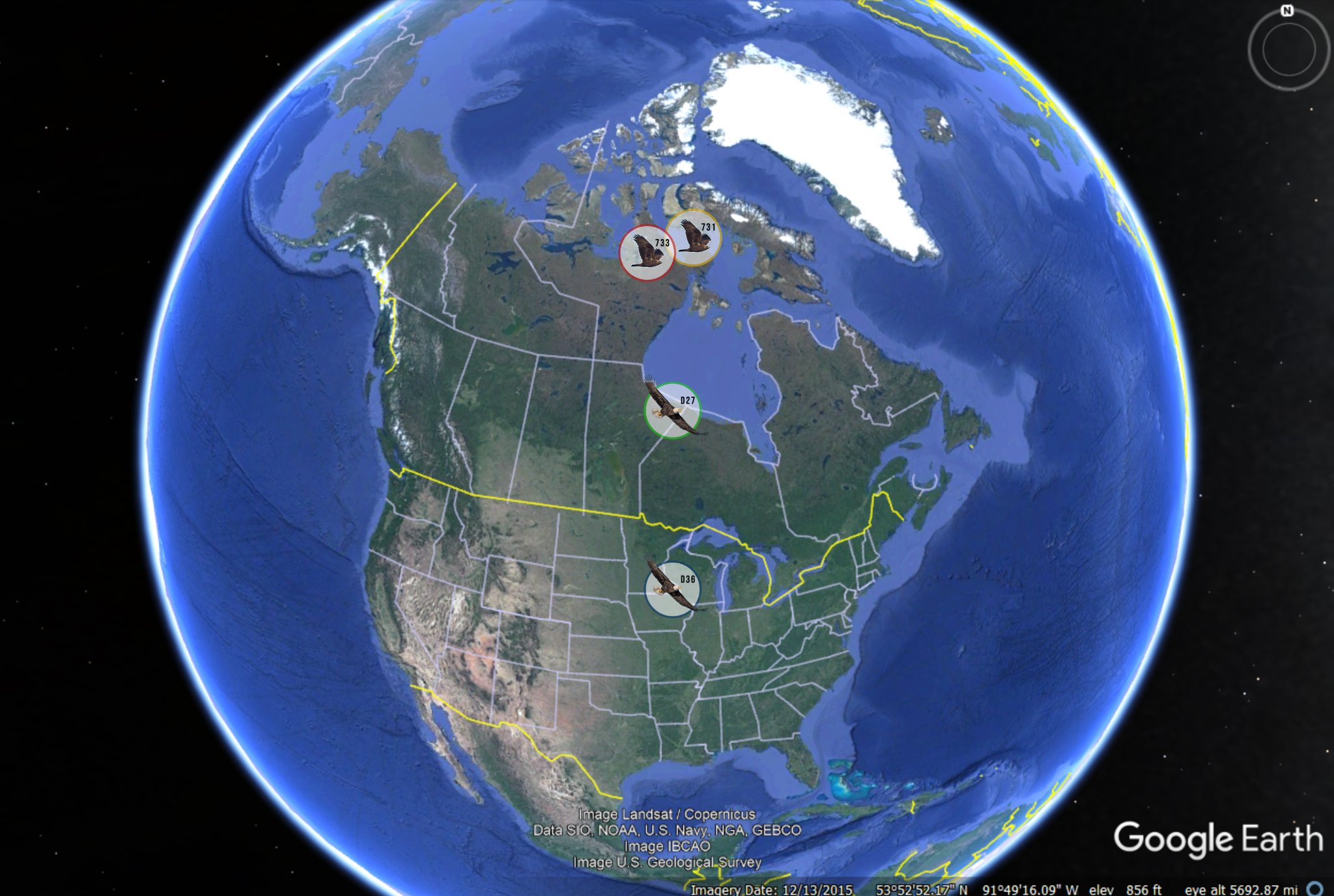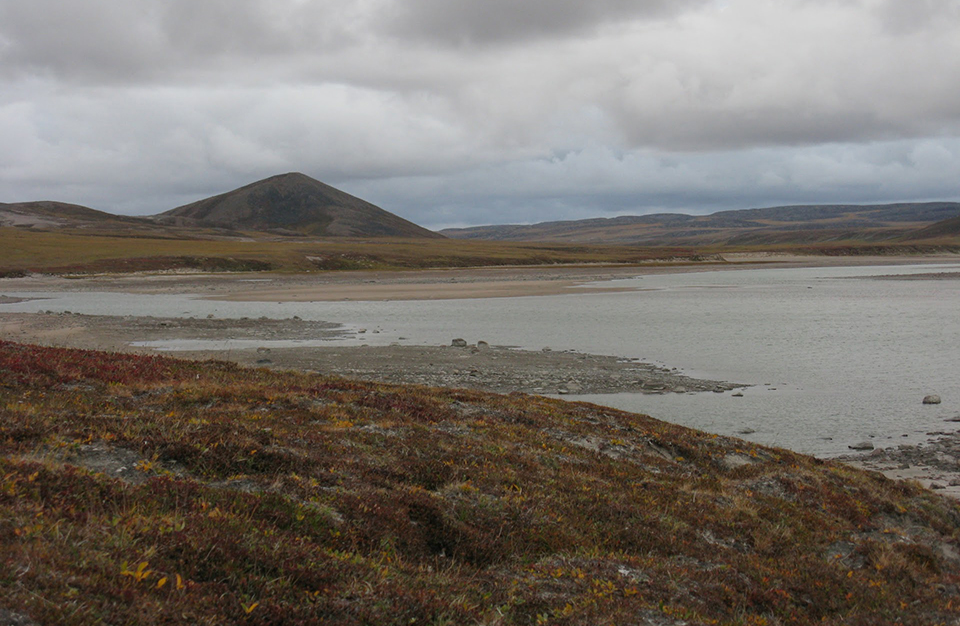Where are D27, D36, and Golden Eagles 731 and 733? D27 and the two GOEA sent postcards from Canada and Nunavut, while D36 is still staycationing in northern Iowa! Their summers are looking something like this…

Thanks for the airmail, eagles!
D27
D27 is continuing her cool eagle summer up on the Hudson Plains. While the area is full of low-lying plains, rivers, and muskeg, she appears to be exploring a large coniferous forest region dotted with lakes…ideal territory for an eagle-cation! She is 827 miles north of her natal nest.
Golden Eagles

What 731 and 733 might see. No full sized trees are found north of the Southern Arctic tree line.
While D27 currently holds the title of ‘Farthest North’ among Bald Eagles from Decorah, both Golden Eagles have her beat by a longshot! GOEA 731, an adult female we captured north of La Crosse WI, sent us a postcard from a remote location 14mi NE of Darby Lake and 66mi SW of Kugaaruk, just south of the Hayes River. I couldn’t get a weather forecast for her location, but nearby Kugaaruk is forecast to be cool and mostly sunny, with a high of 59F and a low of 41F. At 6,200 feet in the air, 731 might see the frigid waters of the Arctic archipelago, glimpse a few of its 36,563 islands, or catch sight of large groups of sea mammals: a valuable source of food and carrion for Golden Eagles and other animals. At least two communities in the area are associated with marine mammals in the Inuktitut language. Arviligjuaq (Kugaaruk), translates to ‘place of many bowhead whales’, while Uqsuqtuuq (Gjoa Haven), translates to ‘lots of fat’, referring to the abundance of sea mammals in nearby waters. GOEA 733, a subadult eagle captured in the same region, is just 83 miles WSW of 731. Both eagles are over 1500 miles north of their wintering grounds.
D36
Some eagles like to travel, but others like to stay closer to home! D36 is continuing his Iowa staycation near Ten-Mile Creek, about 6 miles west of his natal nest. He is surrounded by a familiar patchwork of plowed fields, feedlots, small rivers, pockets of forest, and steep bluffs. It’s considerably greener and warmer than it is 1500 or so miles north: today’s high is forecast to be 84F. Fly high and stay safe, eagles! We hope to see you all back here later this year.
As always, a thousand thanks to Brett Mandernack and Ryan Schmitz for giving us a glimpse into the amazing world of bald and golden eagles, and to the Kohler Company for supporting our bald eagle tracking program. To follow the travels of any of the eagles we’ve tracked, go to https://www.raptorresource.org/learning-tools/eagle-map/. To learn more about our Golden Eagle tracking project, go to https://www.raptorresource.org/learning-tools/golden-eagles/.
Views from their travels: what 733, 731, D27, and D36 might see from their hotel windows!
Photo Credits
- Golden Eagle postcard/Southern Arctic region view: Horst Edig
- D27 postcard/Hudson Bay Plains/Manitoba-Ontario Border: Water Canada
- D36 postcard/NE Iowa: Bureau of Tourism.
- Global Eagle Map: RRP
- Individual Eagle Maps: Brett Mandernack and Ryan Schmitz
 The Raptor Resource Project
The Raptor Resource Project The Raptor Resource Project
The Raptor Resource Project